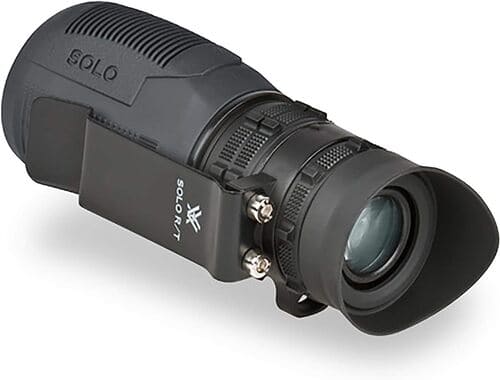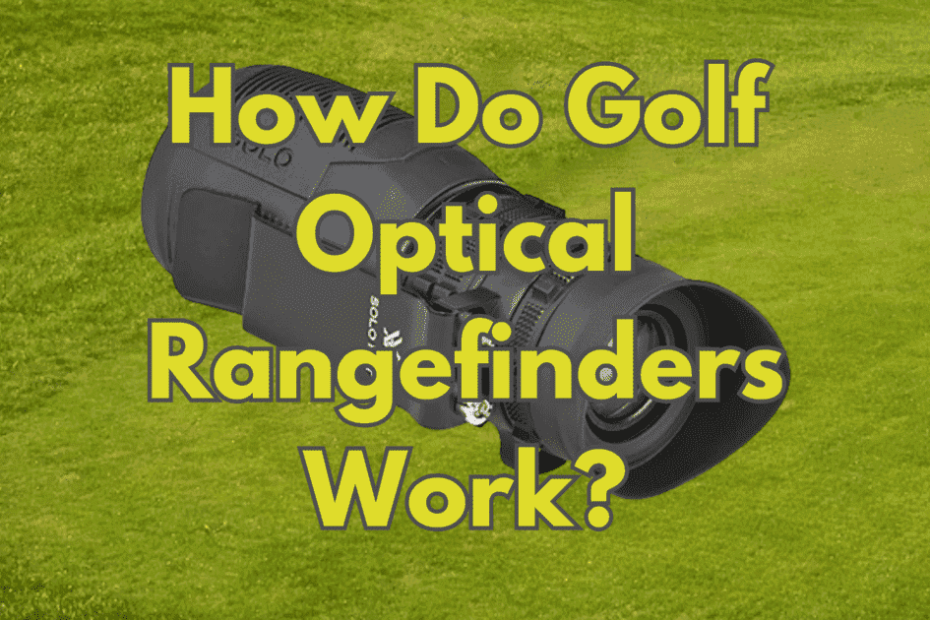Ever pondered how golf enthusiasts of yesteryears determined the flagstick’s distance in the absence of today’s advanced gadgets? In an era devoid of modern electronics, optical golf rangefinders served as the quintessential solution.
Since the 1880s, rangefinder devices have been a staple for golfers, with the optical golf rangefinder being one of the earliest models in existence.
Curiosity might lead you to question the mechanics that allowed rangefinder operation in days of old. The functionality of these devices rested upon specific mechanisms and principles, which we shall elucidate in this discourse. However, prior to delving into the intricacies, let us first establish what precisely an optical golf rangefinder entails.
Optical Golf Rangefinder
The optical golf rangefinder marks the inception of rangefinder technology for golfers. Surprisingly, some individuals still opt for this antiquated device. It aids golfers in gauging distances on the golf course, and even today, one can acquire and utilize these instruments for accurate measurements.
In the realm of rangefinder technology, it stands shoulder to shoulder with its counterparts – the Golf Laser rangefinder and Golf GPS rangefinder. For those seeking a budget-friendly option, the optical golf rangefinder is an ideal choice. These devices are economical and do not incur additional maintenance expenses, as they do not rely on batteries. However, it is worth noting that their accuracy may not match that of more contemporary rangefinders, making them best suited for short-range measurements.
How Do Golf Optical Rangefinders Work?
Understanding the workings of the optical golf rangefinder necessitates a grasp of its physical attributes and components. These rangefinders feature two lenses positioned at opposite ends, accompanied by a focusing knob and an integrated scale. The focal point of this device is the conversion of scale readings into distance, a seemingly intricate process that can be dissected into several distinct elements.
Monocular Design
The optical golf rangefinder boasts a monocular design, equipped with a solitary eyepiece. Users focus one eye on the target pin, while inside the device, a built-in scale and preloaded chart come into play. By aligning the eyepiece lens with the pin’s height, the device measures said height through the scale and subsequently translates it into distance using the preloaded charts.

Focus
For precision, one must ensure that the rangefinder remains centered on the pin. Maintaining a stable focus on the pin’s central point is imperative for accurate height measurement, necessitating steady hands.
Triangulation
The optical golf rangefinder hinges on the principle of parallax, commonly employed in measuring distant objects, particularly by astronomers. This rangefinder capitalizes on this principle for distance measurement, creating a triangular configuration when focused on the pin.
With two lenses positioned opposite each other, the rangefinder centers on the pin, yielding two separate images. The focusing knob plays a pivotal role in aligning and merging these images, subsequently adjusting the scale to provide a distance reading.
The Pros and Cons
Pros
Cost-Efficiency: The optical golf rangefinder is a cost-effective choice for those on a budget.
Battery-Free: There is no need to invest in batteries or software updates.
Accuracy for Short Distances: It delivers precise results for short-range measurements.
Lightweight and User-Friendly: It boasts a lightweight design and ease of use.
Weather Resistant: Weather conditions, including rain, pose no hindrance to its operation.
Cons
Limited Precision: Compared to laser or GPS rangefinders, it may not offer the same level of accuracy.
Pin Size Dependency: Accuracy relies heavily on the size of the pin.
Steady Hands Required: Maintaining a steady hand during operation is imperative for accuracy.
Suitable for Short Ranges: It is primarily designed for short-range measurements.
Declining Popularity: Contemporary golfers rarely opt for this older technology.
Final Thoughts
The optical golf rangefinder employs straightforward mechanics and visual cues to measure distances on the golf course. Your ancestors may have relied on this device for their golfing escapades, and its legacy continues to endure. While rangefinder technologies have evolved over time, their core purpose of measuring golf distances remains unaltered.
Originally conceived for laser rangefinders, the principles of the optical golf rangefinder remain foundational. Despite any criticisms it may receive, one cannot dispute the fact that modern rangefinders are, in essence, refinements of the original optical golf rangefinders.





